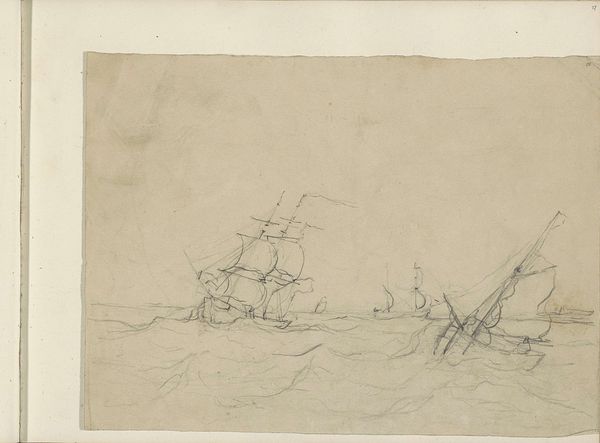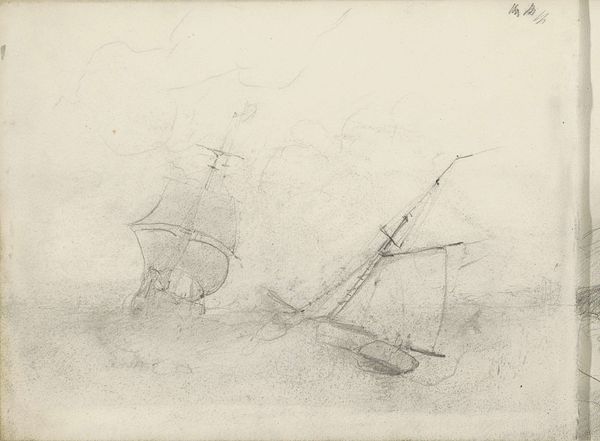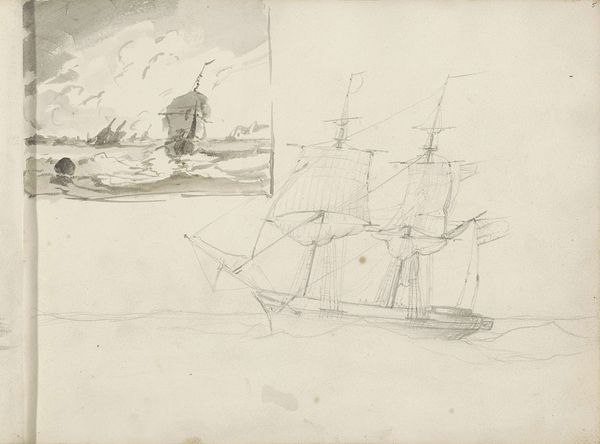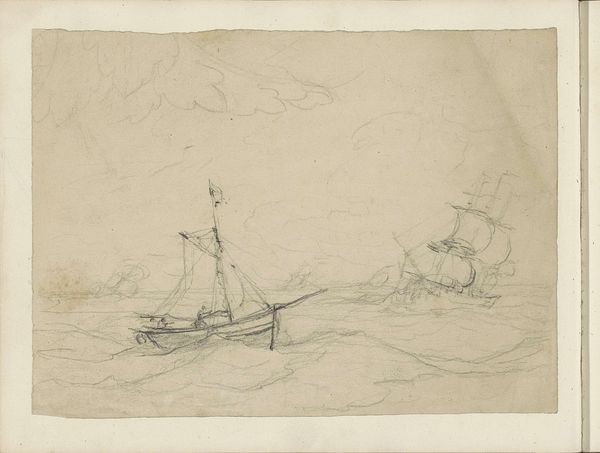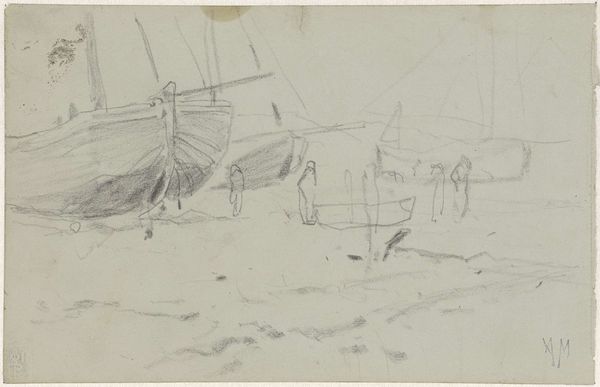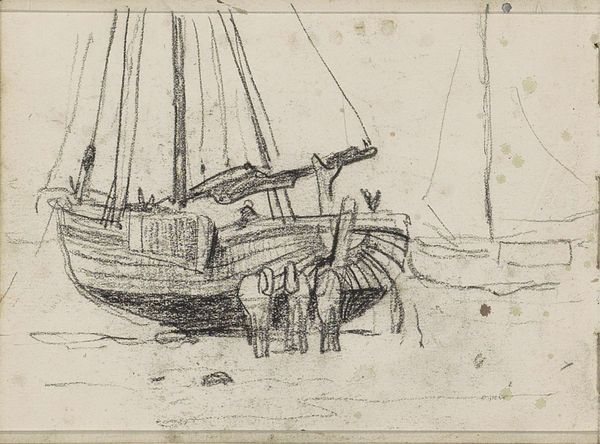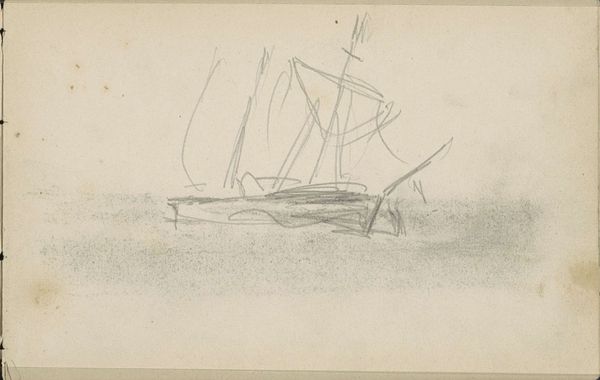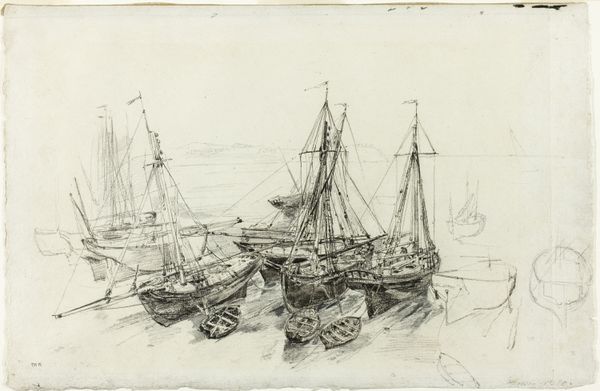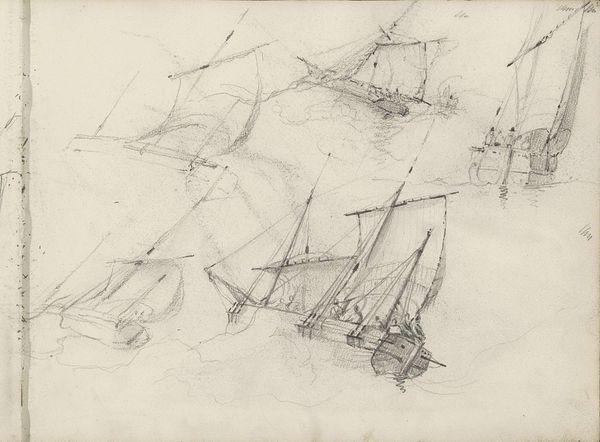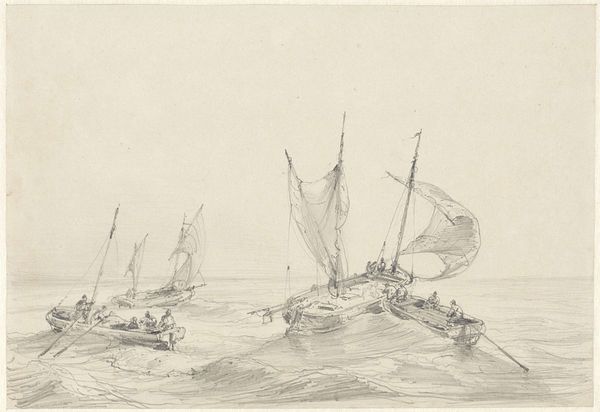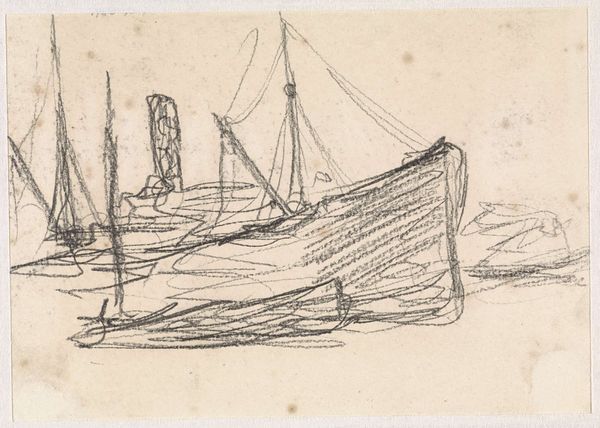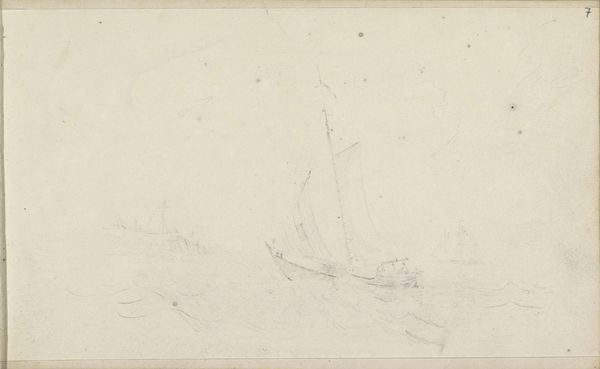
drawing, pencil
#
drawing
#
landscape
#
pencil
#
realism
Copyright: Rijks Museum: Open Domain
Curator: This sketch before us, held in the Rijksmuseum, is titled "Ship in the Barents Sea Between Icebergs." Louis Apol created this pencil drawing around 1880. Editor: Instantly, I’m struck by the sketch's ethereal mood—almost spectral. The sharp, fragmented ice forms seem to trap the ship, which appears incredibly fragile. It gives me a sense of the sheer, indifferent power of nature. Curator: The stark realism speaks to a burgeoning fascination with the Arctic in the 19th century. These voyages into extreme environments became tied to notions of masculine heroism and national identity, reflecting imperial ambitions and a quest to conquer the unknown. Consider the visual weight of a single ship being dwarfed by such sublime monuments of nature, emblems of power over humans. Editor: Absolutely. Ships in art are potent symbols. This is more than a landscape. This vessel calls to mind centuries of naval exploration—cultural projection as well as commercial aspiration projected onto the vast blankness of the arctic north. In the sketch's stark lines, I see an echo of countless expeditions and the unyielding spirit of those brave sailors. Curator: Yet the sublime in art, particularly the polar sublime, became synonymous with the sublime experience of the romanticism of this period. One may question this association if one considers how Indigenous populations of the Arctic were affected, whose ancestral lands became the theaters for white explorers to play out their narratives. These became the background stories to justify colonial and capitalist expansion into the global North. Editor: Yes, the imagery definitely complicates those heroic narratives. The scene’s somberness lends a more profound tone. The fragility of the ship, rendered in delicate strokes, invites contemplation about the cost of that era's exploration, echoing the profound connection between the seafarers and what remains a perilous frontier. The ship—both symbol and material vessel—feels lost, almost destined to be consumed. Curator: It offers us today, centuries removed, a chance to reckon with our cultural mythologies of that time—the legacy and future costs of those narratives, set against the ever-changing background of melting polar ice caps. Editor: Indeed. There is a beautiful, chilling poignancy to the sketch.
Comments
No comments
Be the first to comment and join the conversation on the ultimate creative platform.
